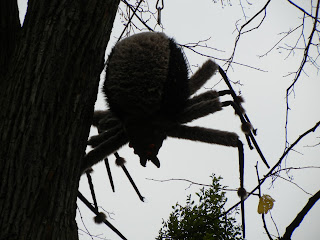This isn't technically a chain-link fence, but the idea is the same. It's a wire mesh structure that I wanted to cover up. I can't live without nasturtiums in my garden, but for various reasons, they are not my first choice for covering my actual chain-link fence. They might, however, be yours...
Here are the pros and cons.
Pros:
*they're easy and cheap to start from seed indoors; they are even easier if they're allowed to re-seed themselves outdoors in the ground (and then the plants seem healthier anyway).
*they attract hummingbirds like crazy!
*you can eat them, or so I hear; please read your seed packets carefully before you eat anything! They have a strong peppery smell that would either define an appetizer, or possibly overwhelm a salad.
*they offer lush, bright green foliage that contrast well with a chain-link fence--lovely, round large leaves that would soften any metal structure
*they do pretty well in hot, dry conditions
*they last a VERY long time at the end of the season, even with light frost; they are among the last plants to die in my garden each fall
*if you keep dead-heading the flowers, they keep blooming
*easy to remove when they die in the fall; unlike morning glory, the vines are easy to break and yank loose from mesh structures
Cons (or reasons they are not absolutely perfect):
*not self-clinging; you have to tend them every few days, weaving them in and out of your fence
*they start from seed each year, which means they won't grow up to waist height until early to mid-July each year; but they can get to be 6 feet tall by late August
*some people have trouble starting them indoors; I started some easily in March indoors, but had trouble in May. Don't know why. They start themselves outdoors very well, especially if they choose their own spot on their own terms (I had less success just throwing seeds in the ground myself in the spring)
And that's about it. I love them, but I tend to want coverage earlier, and my fence is long enough that continually weaving them in and out of the mesh is a nuisance. If you fail to tend them, they can flop forward, and possibly break. They also don't like to be transplanted once they have started outdoors somewhere. I've tried moving "volunteers" to where I want them, and I find that while they survive, they struggle at first.
But they are quite nice, and they also come in pretty dwarf varieties for pots.






































